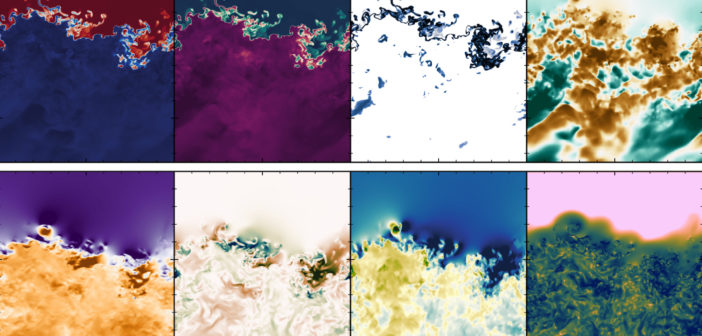What happens in galactic and intergalactic settings when cold, dense gas moves through hot, diffuse gas? You can see the result in the complex simulations shown above (click for a closer look), as reported in a recent publication led by scientist Drummond Fielding (Center for Computational Astrophysics, Flatiron Institute). Turbulent mixing layers like those simulated by Fielding and collaborators form in a vast variety of cosmic environments: the interstellar medium, the circumgalactic medium, expanding supernova remnants, cosmic filaments, galactic winds, protoplanetary disks, the solar corona, and many more. The authors’ new models show the fractal nature of the cooling surface that arises within these layers as the gases mix.
You can watch the animated version of the simulation below, which shows how eight different fluid properties evolve over time in a turbulent layer containing mixing cold and hot gas. For more information, check out the original article, linked below.
Citation
“Multiphase Gas and the Fractal Nature of Radiative Turbulent Mixing Layers,” Drummond B. Fielding et al 2020 ApJL 894 L24. doi:10.3847/2041-8213/ab8d2c


2 Comments
Pingback: SPACE TODAY
Pingback: From AAS NOVA: “Featured Image: Fractals in Cosmic Gas” | sciencesprings